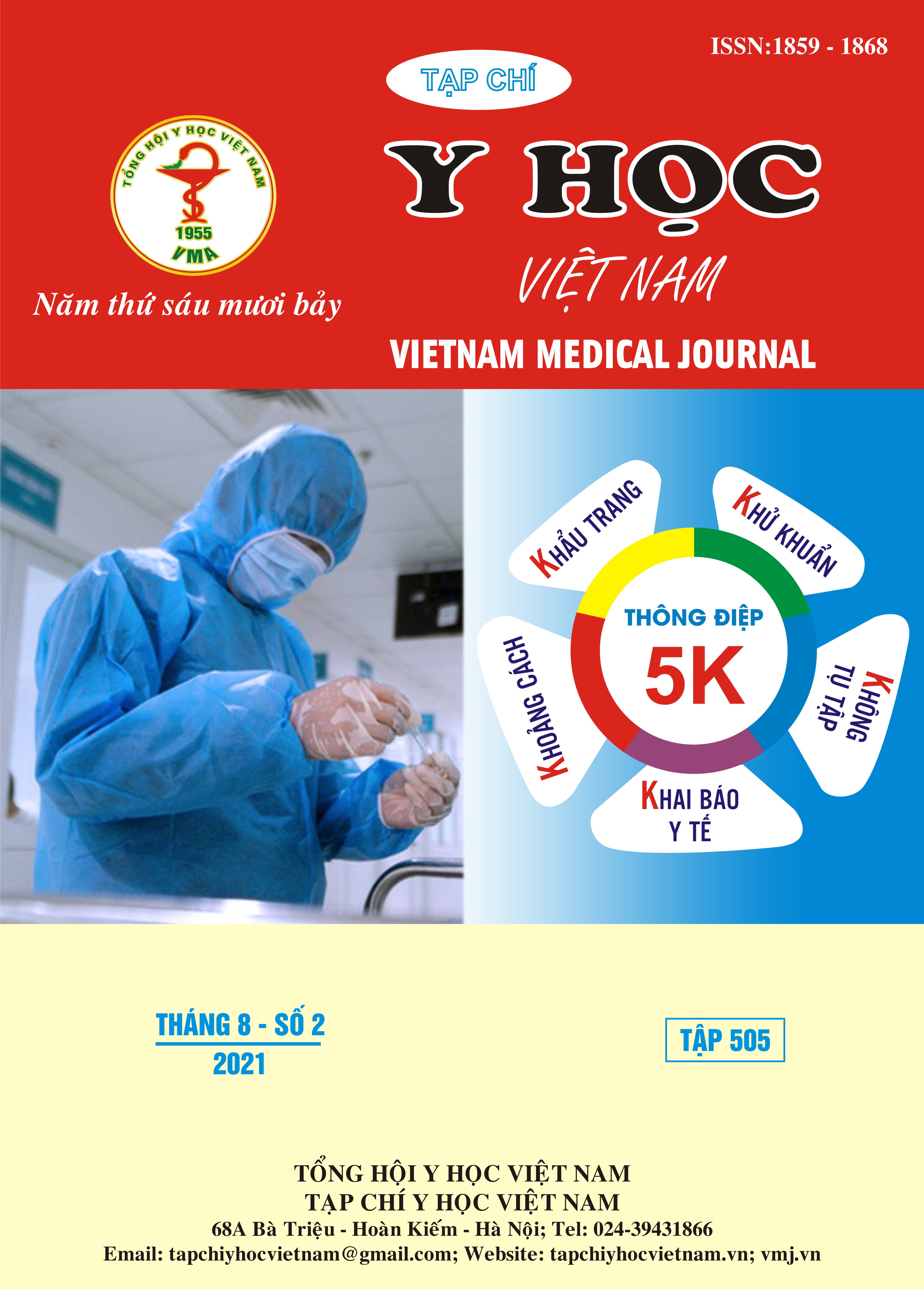SCOPING REVIEW: CLINICAL SYMPTOMS SCORE FOR DIAGNOSIS ADENOID HYPERTROPHY IN CHILDREN
Main Article Content
Abstract
Adenoid hypertrophy is a common disease in children and with an estimated rate of 49.70%. Diagnosis of adenoid hypertrophy in children faces many difficulties during examination because they scared. In some cases, anesthesia is required to assess the grade of adenoid. Many authors have studied on clinical symptoms score to diagnose adenoid hypertrophy. We conducted a scoping review from researchs in the world until 06/2021 with objectives synthesize the clinical symptoms scores is available and comment on the result of studies. The result show that 15 studies were selected. The common clinical symptoms are: snoring 8/10; mouth breathing 7/10; sleep apnea 6/10; difficulty breathing while sleeping 3/10; hyponasality 3/10; daytime symptoms 3/10; recurrent otitis media 2/10; recurrent nasopharyngitis 2/10; discharge nose 2/10. 5/7 studies had a statistically significant correlation with lateral skull X-ray, 3 studies had a high correlation with nasal enoscopy, 3 studies assessed the sensitivity and specificity as 22%-78% and 88%-100%.
Article Details
Keywords
adenoid hypertrophy, clinical symptom score
References
2. Torretta S, Marchisio P, Succo G, Capaccio P, Pignataro L. Nasopharyngeal fiberendoscopy in children: a survey of current Italian pediatric otolaryngological practices. Ital J Pediatr. 2016;42:24. doi:10.1186/s13052-016-0234-y
3. Pagella F, De Amici M, Pusateri A, et al. Adenoids and clinical symptoms: Epidemiology of a cohort of 795 pediatric patients. Int J Pediatr Otorhinolaryngol. 2015;79 (12):2137-2141. doi:10.1016/ j.ijporl.2015.09.035
4. Prestes L, Neto G, Camera M. Adenotonsillectomy effect on the life quality of children with adenotonsillar hyperplasia. Int Arch Otorhinolaryngol. 2009;13.
5. Kindermann CA, Roithmann R, Lubianca Neto JF. Sensitivity and specificity of nasal flexible fiberoptic endoscopy in the diagnosis of adenoid hypertrophy in children. Int J Pediatr Otorhinolaryngol. 2008;72(1):63-67. doi:10.1016/ j.ijporl.2007.09.013


